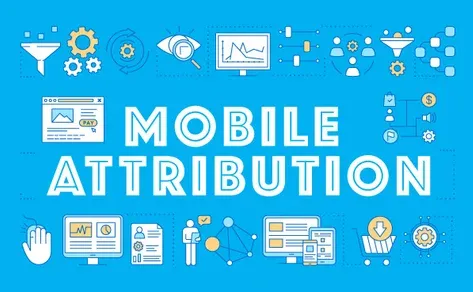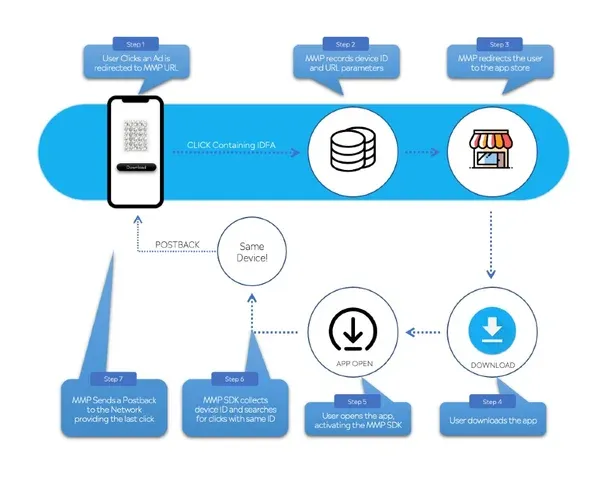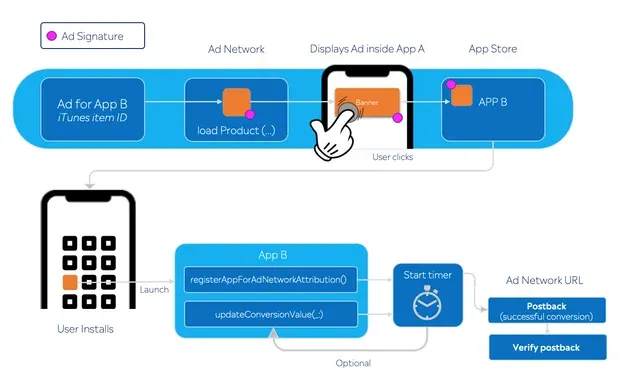Solutions
Teams
Built for your whole team.
Industries
Trusted by all verticals.
Mediums
Measure any type of ad spend
Platform
Use Cases
Many Possibilities. One Platform.
AI and Automation
The Always-on Incrementality Platform
Teams
Built for your whole team.
Industries
Trusted by all verticals.
Mediums
Measure any type of ad spend
Use Cases
Many Possibilities. One Platform.
AI and Automation
The Always-on Incrementality Platform
A guide to Marketing Measurement

Many developers believe that there is only one measurement method available: Last Touch Attribution.
We wanted to bring you this article revealing the various methods of measurement available as an app marketer.
Incrementality measurement a method to understand the true value of Advertising spend. It is more operational and tactical than Media Mix modeling , but is not as granular nor real time as Last Touch attribution.
Incrementality measurement does not assume to replace attribution. Incrementality measurement relies on last-touch attribution data to indicate if paid and/or attributable conversions had any value to the Advertiser or if the attributable conversions are cannibalizing the organic new user base or the user base arriving from other paid media sources.
Incrementality attribution can provide insights in granular levels over campaigns, demographics, vendors, geo location, contextual features. These insights can be used in an operational - tactical level.
As this form of measurement operates simultaneously to attribution, Advertisers can forward or stream conversions and ad spend data from any platform used to understand the true value of their spend, including non digital mediums such as TV , Radio and obviously - Digital.
Incrementality measurement requires a heavy investment into technology, utilizing causal inference algorithms, difference in different techniques, concepts from game theory, market seasonality data, disrupted time series and machine learnings to come up with the right hyperparameters to provide actionable insights for the Advertiser to consider.
A common misunderstanding of incrementality is the utilization of “incrementality testing” only for reattribution (or retargeting) activity, where media vendors use a randomized control group and serve those with ghost ads showing that the segment being served normal ads does perform better. This type of testing still utilizes Last-Touch attribution , thus making the result of the test skewed.
Last Touch Attribution is also referred to as "last-click". As the title implies, this model gives 100% credit to the last ad a user interacted with before conversion.
Example: A user finds the app Featured on the app store and installs it. The user clicked an ad on Twitter for your app a week prior to downloading, but didn’t install. In this example - Twitter will get 100% credit for the install.
Pros & Cons of Last Interaction Attribution

Device identifiers acted as the key for tracking and attribution.
Unlike Websites, where Advertisers control their own domain (literally) – Apps required the help of a 3rd party tool to handle tracking and attribution.
The graph below demonstrates the tracking & attribution process:

Wherever the IDFA was not passed (for example: Mobile Web inventory, or when Limit Ad Tracking was enabled), attribution providers relied on fingerprinting mechanics to match between an impression/click and an install once their SDK was triggered.
With both IDFA and Fingerprinting limitations – Attribution as we knew it is gone.
During the Apple WWDC event in June 22nd, Apple also announced an attribution solution for developers – SKAdnetwork 2.0 (“SKAd”)
SKAd(17) offers an elegant approach to Attribution without invading users’ privacy.
The API involves three participants:
· Ad networks that sign ads and receive install notifications when ads result in conversions
· Source apps that display ads provided by the ad networks
· Advertised apps that appear in the signed ads
Ad networks must register with Apple, and developers must configure their apps to work with ad networks.
The following diagram describes the path of an install validation. App A is the source app that displays an ad. App B is the advertised app that the user installs.

When a user clicks an ad, advertisers display an App Store product screen with signed parameters that identify the ad campaign. If a user installs and opens an app, the device sends an install validation postback to the ad network. The Apple-signed notification includes the campaign ID but doesn’t include user- or device-specific data. The postback may include a conversion value and the source app’s ID if Apple determines that providing the values meets Apple’s privacy threshold.
Multi Touch attribution promises Advertisers with giving all steps in the user path some portion of the credit for generating a conversion.
This model require data science and machine learning for an Advertiser to correctly create a time series based on as much historical data as possible.

Media Mix Modeling or Marketing Mix Modeling or in short: MMM is a statistical method to estimate the impact of various marketing tactics on sales in order to better forecast and come up with a better marketing strategy.
The method was developed in econometrics for the consumer packaged goods industry and has become common with brand cross platform Advertisers in the last years.

Media Mix Models require historical data to have any helpful outputs. Often, the data needs to include external influencing factors such as competitors activity, product launches, financial events, weather and any major event that may have influenced the performance of a product (i.e. during an Olympics year, more people buy sport goods).
Due to these requirements - Media Mix Models work best for refining a strategy, expecting influencing factors such as changes in the media mix and/or external factors to help understand what would be the best media mix to market a product over time.
Media Mix does not work well for new product launches, as without historical data - there are simply too many unknown variables.
B2B2C brands (i.e. consumer goods, retail, consumer electronics) often must rely on Media Mix Modeling to analyze the effectiveness and impact of their paid marketing activities.
Attempts to use a simple version of Media Mix Modeling are tested regularly by Advertising being turned off completely , allowing Advertisers to analyze sales activities with no Advertising in place - however, switching off all Advertising is extremely hurtful to most Advertisers as while doing so - competition may consume market share, thus, hurting long term brand equity for an Advertiser experimenting with turning off the lights across all marketing activities.
INCRMNTAL is an incrementality measurement platform providing incrementality scores over campaigns and channels. The platform does not replace mobile attribution but uses attribution data to measure the true value of your advertising spend.
If you want to learn more, visit INCRMNTAL or book a demo today!

Maor is the CEO & Co-Founder at INCRMNTAL. With over 20 years of experience in the adtech and marketing technology space, Maor is well known as a thought leader in the areas of marketing measurement. Previously acting as Managing Director International at inneractive (acquired by Fyber), and as CEO at Applift (acquired by MGI/Verve Group)